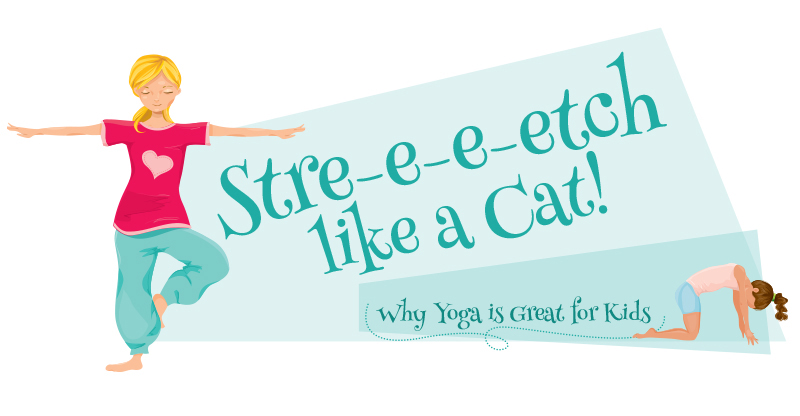Libbey York discovered why yoga is great for kids when she enrolled her sons Graham, 8, and Lawson, 4, in a children’s yoga class at Studio South Williamsburg last summer thinking they could meet friends and try something new. Their response surprised her.
“They couldn’t stop talking about all of their new moves and practicing their poses all around the house!” she says. In addition to improving flexibility and strength, “the class also improved their focus and body awareness as they attempted the poses.”
Graham likes practicing seated crossed-leg pose, and Lawson loves to show off his tree pose. Not only are the poses physically challenging, they require concentration.
Many adults swear by the ancient practice of yoga for stress relief, to improve flexibility, balance and strength, and to enhance daily focus. With playful names like downward dog, cat, cow, and gorilla, yoga poses easily inspire the imagination of the younger set.
Holistic Benefits
Yoga, which in Sanskrit means “to yoke,” nurtures a connection between the mind, body and spirit. Multiple studies have found the practice to be an effective stress management tool. Among children, yoga has been shown to improve academic performance, physical fitness, self-awareness, self-esteem, concentration, emotional balance and behavior.
“In this fast-paced world in which we live, children need to know how to relax and breathe and mindfully move through their day,” says Katy Henderson, founder of Studio South in Williamsburg, Va. “Teaching children how to breathe in yoga allows them to take that crucial breath before they get mad, angry or frustrated.”
Studies also suggest that yoga practice can help children with ADHD learn to calm their minds and focus on the present, improving on-task time and attention. Furthermore, “for the child who is not particularly active, yoga provides an avenue to move in a playful, engaging way,” Henderson says.
Pauline Emmett, YoKid Ambassador at Body Balance Studio Williamsburg, adds that yoga can also positively influence a child’s self-image.
“In practicing yoga, children experience better self-esteem, and therefore have the confidence to trust themselves as being strong and capable beings,” she says. “We talk about self-love, and how if we love ourselves we can better care for our friends, family and the world.”
Introducing Kids to Yoga
- Start your child’s day off with some simple stretches and end the day with three deep belly breaths before bed.
- Purchase or borrow a yoga video geared toward kids.
- Check out YouTube for free children’s yoga instruction videos.
- Role model and invite your kids to join you during your yoga practice.
- Discover The Kids’ Yoga Deck: 50 Pose and Games by Annie Buckley.
- Look for classes and workshops in the area and check with your child’s school.
“A lot of the local school systems offer free yoga for children through the after-school SHIP (School Health Initiative Program),” Henderson says.
York, who is also a yoga practitioner likes that she can connect with her children through yoga. “I hope that we can continue our practice together for years to come.”
Also, check with your local Department of Parks & Recreation for children’s yoga classes.

